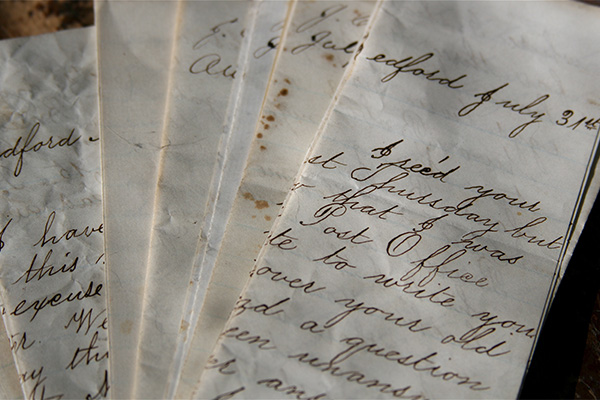A historian reflects on the value of letters
The humble letter proved a communication lifeline for Avondale alumna and missionary Margaret Watts between 1956 and 1966. She wrote letters almost every week to family and friends. For four years, the letters came from Redcliffe Mission Station on the island of Aobe in the New Hebrides, and for the last six years they came from Inus Mission Station on the island of Bougainville in the Territory of New Guinea. Dearest Folks: Letters Home From a Missionary Wife and Mother publishes almost 100 of these surviving letters, mostly from mid-1964 onwards.
Letters are an invaluable resource to historians, especially if they are written with no intended audience beyond those to whom they are addressed. They preserve a wealth of information, since memory recalls the big or traumatic events at the expense of the mundane and familial. Once the biases of the letters are understood, they offer a clearer account of situations—as they were understood by the writer—than can be obtained in any other way.
In the case of the letters in Dearest Folks, the bias is, in Margaret’s own words, “for those at home to share in the thrill of mission service with us and feel part of our day-to-day family life as it unfolded during our years on remote mission stations. It was especially with the grandparents in mind as they would be missing the children’s early years and unable to interact in their lives.”
[Letters] preserve a wealth of information, since memory recalls the big or traumatic events at the expense of the mundane and familial. Once the biases of letters are understood, they offer a clearer account of situations—as they were understood by the writer—than can be obtained in any other way.Robyn Priestley
In the letters, we have an account of life on the islands of Aobe and Bougainville that has an immediacy and unselfconsciousness that makes it unique and invaluable. The letters cover a range of everyday events, family life and medical crises and treatments. The letters also include details of relationships with the mission station communities, neighbouring villagers, expatriate families and members of other Christian groups. Some of the detail might seem trivial, but respect for the value of the resource makes it important not to leave out details that could only ever be captured once, and in this way.
The letters also provide a glimpse of the last years of colonial life on Bougainville. This glimpse is limited mainly to the Seventh-day Adventist and expatriate communities. Its value, though, lies in the insights it gives into a culture and way of life that was not only changed by the passage of time, but also swept away violently by the brutality and disruption of civil war.
We are all shaped by our stories and our memories of them. Every story is important to the person to which it belongs, but many are also important to the communities from which they come. If the stories are not told, their absence creates a collective amnesia and, in Adventist mission history, this has often been a forgetfulness of the roles of mission wives and children.
The stories of Adventist missionaries in the South Pacific have been related for many years and several important recollections have been published recently, but none have been written with the intention of primarily recreating the family life of the missionaries. The letters preserved in this book provide an opportunity to put flesh and bones to the story of one of the many women who went willingly when their husbands were “called” to the adventure of mission service. Their stories are assumed to be known but are usually subsumed silently into the larger mission story without detail, and often without acknowledgment.
This omission has already been noted with concern by some of those who have written accounts of Adventist mission in the Pacific. Rose-Lee Power, the Adventist Church in the South Pacific’s archivist and Curator of the Adventist Heritage Centre, has initiated a project to collect and preserve information on the role and contribution of women in the mission work of the South Pacific. And the upcoming conference, Waves Across the Pacific: Uncovering Adventist Mission, has the family life of missionaries as one of its themes. The letters in Dearest Folks will be a valuable resource in this attempt to understand the contribution of women to Adventist mission in the South Pacific.
Share

